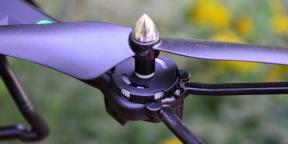Journalist in an extreme situation - free course from Open Education, training 16 weeks, Date November 30, 2023.
Miscellaneous / / December 02, 2023
The course “Journalist in an Extreme Situation” examines the work of a journalist in various types of extreme situations: military operation, terrorist attacks, man-made disasters, natural disasters, street disorder. The technologies of work of journalists with sources of information in various crisis situations are considered. The course teaches the rules of personal safety, introduces the legal and ethical standards of conduct for a journalist in extreme situations.
During the classes, both Russian and foreign experience is considered. The main goals of mastering the course “Journalist in an extreme situation” are the formation of a holistic view among students about the work of a journalist in extreme situations, understanding the risks that arise and mastering their methods minimization.
15
Corporate and public support for journalists injured in the performance of their professional duties
Currently, Moscow University is one of the leading centers of national education, science and culture. Raising the level of highly qualified personnel, searching for scientific truth, focusing on humanistic ideals of goodness, justice, freedom - this is what we see today as following the best university traditions Moscow State University is the largest classical university in the Russian Federation, a particularly valuable object of cultural heritage of the peoples of Russia. It trains students in 39 faculties in 128 areas and specialties, graduate students and doctoral students in 28 faculties in 18 branches of science and 168 scientific specialties, which cover almost the entire spectrum of modern university education. Currently, more than 40 thousand students, graduate students, doctoral students, as well as specialists in the advanced training system are studying at Moscow State University. In addition, about 10 thousand schoolchildren study at Moscow State University. Scientific work and teaching are carried out in museums, at educational and scientific practice bases, on expeditions, on research vessels, and in advanced training centers.
History of extreme journalism.
Journalism of the 17th-18th centuries. Editions. Themes.
19th century: the formation and development of extreme journalism. Crimean War. First photos. Experience of Russian and foreign journalists. Russian-Turkish war. Streamlining the work of journalists.
20th century. Russo-Japanese War. Censoring of correspondence. V.A. Gilyarovsky and his experience in covering extreme situations. Journalists during the First World War.
The Great Patriotic War: the experience of Soviet correspondents, photographers, cameramen.
Soviet journalists in Afghanistan. Coverage of the Chernobyl disaster. Coverage of earthquakes in Spitak, Leninakan.
Legal aspects of the work of a journalist in extreme situations.
Basic international and Russian laws regulating the work of journalists. The concept of "combatant". Amendments 2018 to the Law on Mass Media. Insurance for journalists.
Courses for journalists going on business trips to hot spots. International organizations working in emergency zones.
Features of the work of journalists in extreme situations: general principles.
Accreditation of journalists. Visas. Transport. Security of journalists. Places to stay. Clothing and insignia.
Features of the work of journalists in various types of extreme situations.
Basic principles of safety during VC, TA, natural, man-made, humanitarian disasters, epidemics. Working with fixers.
Media coverage of plane crashes.
Rules for covering disasters. Ethical mistakes of journalists. Ways to fix it. Work regulations.
Drone journalism: a method of collecting information in extreme situations.
Legislation when using technology. Experience in using UAVs to collect information in various emergencies. Ethical aspect.
Gender characteristics of a journalist’s work in extreme situations.
Story. Experience of female journalists. Hazards of work.
Journalists are captured.
Experiences of journalists who survived captivity. Stories of liberation. "Voluntary" captivity. Threats received by journalists. Safety regulations.
Photojournalism in extreme situations.
Ethical aspect. Safety of photojournalists.
Ethical aspect of the work of journalists in extreme situations.
International codes governing the work of the media. Media style guides. Russian experience: laws and regulations. Errors in covering terrorist attacks in the 2000s (Nord-Ost, Beslan, etc.). Effects of mass media when covering emergencies (Kemerovo, TA in St. Petersburg, Kerch, etc.). Sources of information and their verification. Telegram channels and blogs of military officers.
Coverage of interethnic conflicts in the media.
Legislation. Media covering the topic. Guild of Interethnic Journalism. Interethnic agenda: provocations of journalists and bloggers (genocide in Rwanda). Ethical regulations. Competencies of journalists.
Attached journalists. Stringers. Various forms of work organization.
History of the attachment of journalists. Terminology. Application practice. Attitude of the professional community. Stringers. Features of the work. Security questions. Experience of stringers in the 1990s. Experience of modern stringers.
Psychological aspects and stress factors of journalists' work.
Terminology. Features of manifestation. Development factors. Ways to overcome. Experiences of journalists who have had traumatic experiences.
Corporate and public support for journalists injured in the performance of their professional duties.
History V. Nogina and G. Kurennogo. Journalists helping colleagues: promotions, flash mobs.



